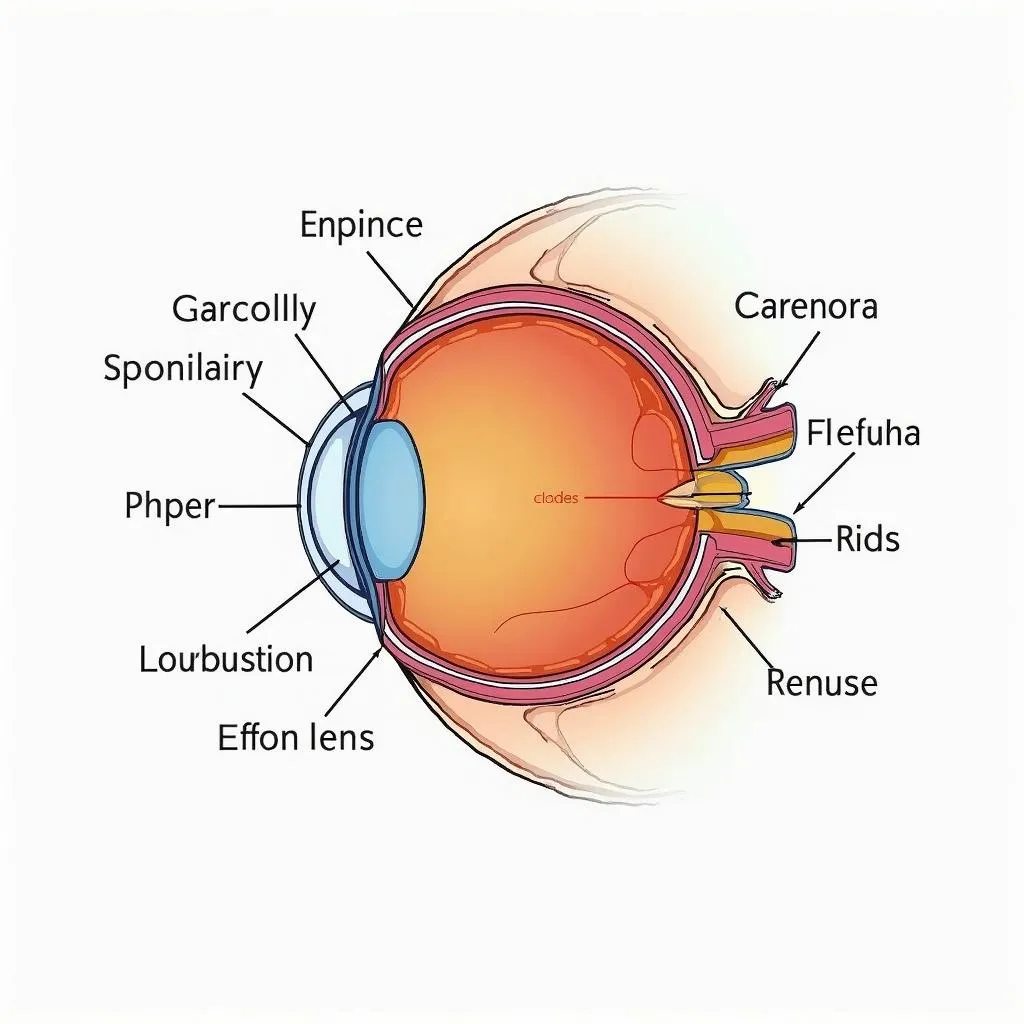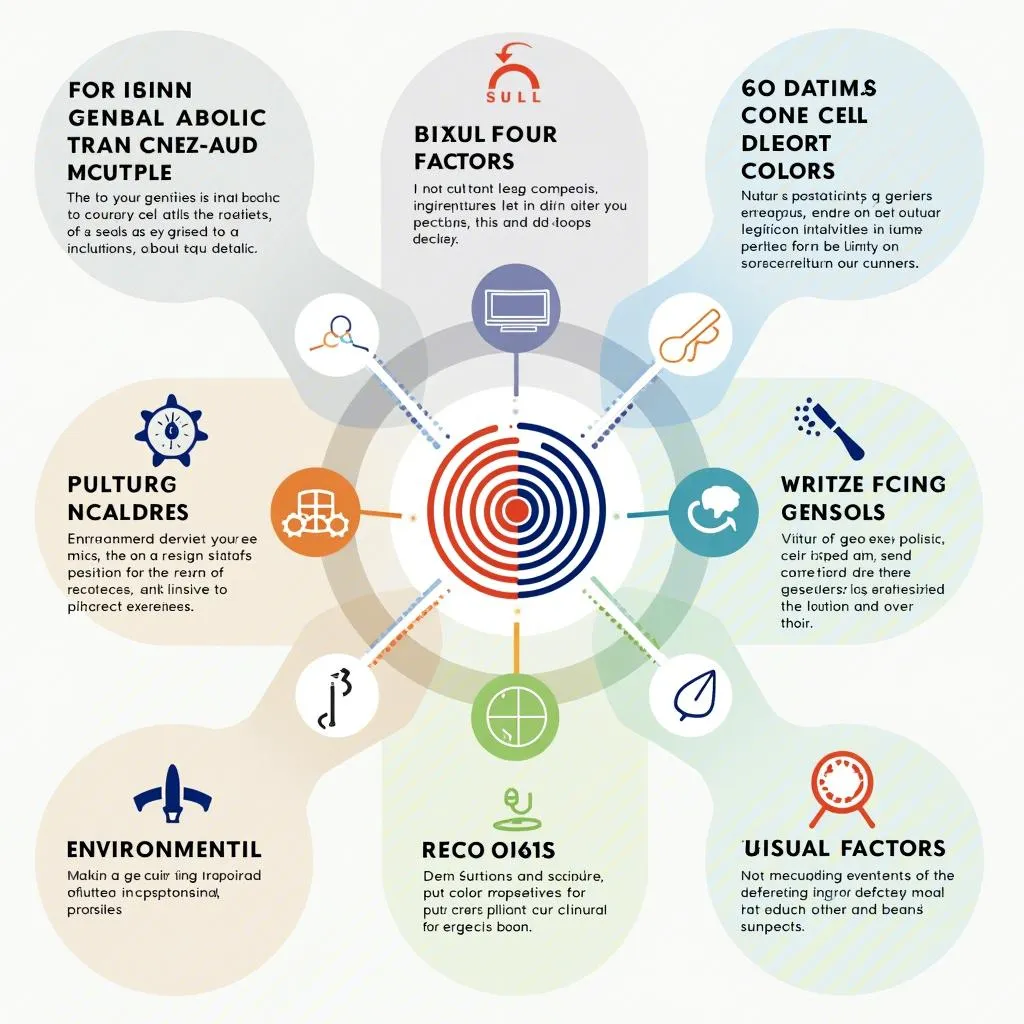The claim that women see more colors than men is a popular one, often circulating as a fun fact or a point of lighthearted debate between genders. But is there any truth to it? As a color expert, I’m here to delve into the fascinating science of color perception and explore the differences, if any, between how men and women perceive the world’s vibrant palette.
The Biology of Color Vision
To understand the nuances of color perception, we need to journey into the human eye. Within the retina, we have two types of photoreceptor cells: rods and cones. Rods excel in low-light conditions, responsible for our night vision and perception of light and shadow. Cones, on the other hand, are our color specialists, thriving in well-lit environments and allowing us to perceive the world in all its vibrant hues.
Now, here’s where things get interesting. We have three types of cones, each sensitive to a different range of wavelengths of light:
- L-cones: Detect long wavelengths (reddish light)
- M-cones: Detect medium wavelengths (greenish light)
- S-cones: Detect short wavelengths (bluish light)
The interaction and stimulation of these cones, sending signals to the brain, is what allows us to perceive millions of different colors.
 Human Eye Anatomy
Human Eye Anatomy
The Genetic Factor: X-Linked Vision and Color Deficiency
The genes that code for L-cones and M-cones are conveniently located on the X chromosome. Since women have two X chromosomes (XX) and men have one X and one Y chromosome (XY), there’s a higher chance of women inheriting two slightly different versions of these genes. This difference can lead to a greater range of color sensitivity in some women, allowing them to perceive subtler variations in hues, particularly within the red-orange spectrum.
Color deficiency, commonly known as color blindness, is more common in men. This is because if a man inherits a faulty gene on his single X chromosome, he will have color deficiency. Women, with their two X chromosomes, have a backup copy of the gene, making them less likely to be affected.
Beyond Biology: The Role of Culture and Experience
While genetics lays the groundwork for color vision, it’s not the whole story. Our perception of color is also influenced by:
- Language: Different cultures have varying numbers of color terms, which can affect how people categorize and remember colors.
- Experience: Our surroundings, upbringing, and exposure to different colors shape our color perception and preferences. For example, someone who grew up surrounded by nature might be more attuned to subtle variations in greens and browns.
- Personal Factors: Individual differences in visual acuity, age, and even mood can influence how we perceive color.
 Factors Influencing Color Perception
Factors Influencing Color Perception
So, Do Women Really See More Colors?
The answer is: it’s complicated. While some women may possess a genetic advantage that allows for a broader range of color perception, particularly in the red-orange spectrum, it’s not a universal truth that all women see more colors than all men. Color vision is a complex interplay of genetics, biology, and environmental factors.
Seeking Expert Guidance
At Color Box Ha Noi, we celebrate the individuality of color perception. Our team of color experts understands that creating your ideal living space goes beyond simply choosing a shade from a chart. We’re here to guide you through the world of color, helping you select hues that resonate with your unique vision and enhance your daily life.
FAQ
1. What is tetrachromacy?
Tetrachromacy is a rare genetic condition where an individual possesses four types of cone cells instead of the usual three. This can potentially allow them to see an even wider range of colors, estimated to be in the tens of millions.
2. Can color blindness be cured?
Currently, there is no cure for inherited color blindness. However, special glasses and contact lenses can help individuals with color deficiency perceive a broader spectrum of colors.
3. Does age affect color perception?
Yes, as we age, the lenses in our eyes can yellow, affecting our ability to perceive blue and violet hues.
Need Help Choosing the Perfect Colors?
Contact Color Box Ha Noi at 0373298888 or email us at [email protected]. Our team of color experts is ready to assist you in creating a vibrant and inspiring space that reflects your unique style. Visit our showroom at 86 Cầu Giấy, Hà Nội, and let’s embark on a colorful journey together!

